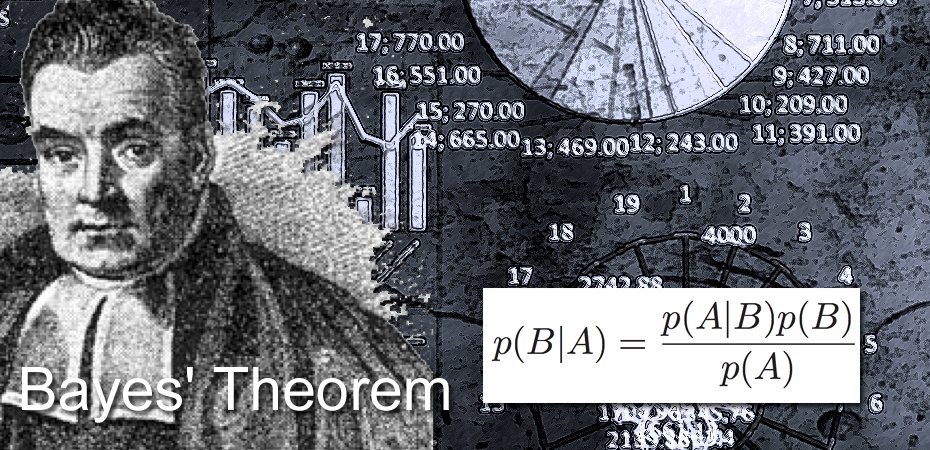
If I were again beginning my studies, I would follow the advice of Plato and start with mathematics.
Galileo Galilei
Anyone who has spent any time listening to me pontificate about “statistical stuff” has no doubt heard me mention the word “Bayesian” and has probably had me ask the question, “What are your priors?”
All of this refers to a concept known as Bayesian Probability and focuses on something you should have learned about (at least briefly) if you ever took a course in Probability. Because I feel I must, I will show you what is known as Bayes’ Theorem, but will keep the scientific speak to a minimum after that. So, here you go…
The theorem is named after Thomas Bayes ( 1701 – 1761), who also happened to be a Presbyterian Minister. The theorem was offered as a solution to a problem on Inverse Probability. Arguably his most famous contribution to mathematics, it wasn’t published until after his death, however. The notes that he had were compiled, edited and published by a fellow preacher named Richard Price. In recent years, Bayes’ Theorem has become more and more “mainstream” and accepted as a legitimate approach to solving some problems mathematically, specifically in the area of data science and prediction making. This wasn’t always the case.
I remember like yesterday the debates that raged between two of my graduate professors. Jim Albert was ahead of his time perhaps, touting the significance of the Bayesian approach to the field of math and statistics. His adversary in these discussions, Edsel Pena, was fighting for the classic statistical or “frequentist” approach to the world. I confess these discussions were more entertaining to me at times than instructive. Although over the years, I’ve come to better appreciate their passion and understand the merits of each viewpoint.
Much of the challenge that the idea receives is that there is an element of “subjectivity” to the elements of the equation. The P(A) (read, “the probability of event ‘A’”) and P(B) are called the Prior Probabilities and in modern usage can be estimated in ways that may, or may not be, shall we say, incredibly robust. So, when you are trying to determine “the probability of A given B” or P(A|B), what you use for those prior probabilities becomes rather critical. That said, the approach is also incredibly useful and has applications that are far reaching.
Bayesian methods have become popularized in no small part in recent years by the work of Nate Silver. Silver may be best known for his ability to correctly predict 49 of the 50 states (in terms of who they voted for) in the 2008 presidential election, as well as all 35 Senate races that year. In his 2012 book The Signal and the Noise, Silver states the following: “Bayes’s theorem is nominally a mathematical formula. But it is much more than that. It implies that we must think differently about our ideas – and how to test them. We must become more comfortable with probability and uncertainty. We must think carefully about the assumptions and beliefs that we bring to a problem.”
Therein, to me, lies the beauty of the Bayesian approach to things: We must think differently… We must think carefully… We must be more comfortable with uncertainty…
These statements perfectly encompass the imperatives of doing business in our world today in general – and marketing research specifically. And I might add, they are some of the precise reasons we approach what we do at Marketing Workshop with a researchWISE® mindset. Think differently… think carefully… be comfortable with uncertainty… If we do this then the probability that we will be successful, becomes much greater.
~ Marketing Workshop
